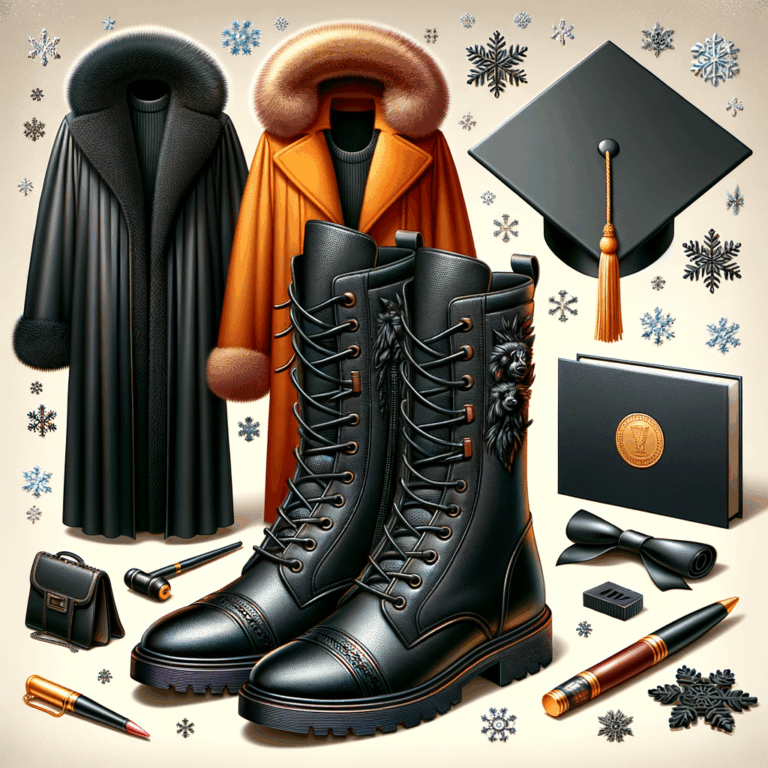
Blog
“Step into comfort and performance with the perfect running shoes for men.”
Introduction
Choosing the right running shoes for men is essential for a comfortable and injury-free running experience. With a wide range of options available, it can be overwhelming to find the perfect pair. However, by considering factors such as fit, cushioning, stability, and durability, you can make an informed decision. In this guide, we will explore these key factors and provide tips on how to choose running shoes that best suit your needs.
Factors to Consider When Choosing Running Shoes for Men
Choosing the right running shoes is crucial for any man who wants to take his running game to the next level. The right pair of shoes can make all the difference in terms of comfort, support, and performance. With so many options available on the market, it can be overwhelming to know where to start. However, by considering a few key factors, you can find the perfect pair of running shoes that will help you reach your goals.
First and foremost, it’s important to consider your running style and the type of terrain you typically run on. Are you a road runner or do you prefer hitting the trails? Different types of running shoes are designed to accommodate different surfaces. Road running shoes are typically lightweight and have a cushioned sole to absorb impact on hard surfaces. On the other hand, trail running shoes have a more rugged outsole and provide extra stability and protection for uneven terrain. By choosing the right type of shoe for your running style, you can ensure a comfortable and safe running experience.
Another important factor to consider is your foot type and pronation. Pronation refers to the natural inward rolling motion of the foot during the running gait. There are three types of pronation: neutral, overpronation, and underpronation (also known as supination). Understanding your pronation type can help you find a shoe that provides the right amount of support and stability. If you have neutral pronation, you can choose a shoe with moderate cushioning and support. If you overpronate, meaning your foot rolls inward excessively, you may need a shoe with extra stability features. Conversely, if you underpronate, meaning your foot rolls outward, you may need a shoe with extra cushioning to absorb shock.
Comfort is another crucial factor to consider when choosing running shoes. Your shoes should fit snugly but not too tight, with enough room in the toe box to wiggle your toes. It’s also important to consider the width of your feet, as some shoes are available in different widths to accommodate different foot shapes. Trying on several pairs of shoes and going for a short run or jog in them can help you determine which ones feel the most comfortable and supportive.
Durability is also an important consideration, especially if you plan on running regularly. Look for shoes with a durable upper material, such as mesh or synthetic leather, and a sturdy outsole that can withstand the wear and tear of running. Additionally, consider the weight of the shoe. While lighter shoes may provide a more responsive feel, they may not be as durable as heavier shoes. Finding the right balance between weight and durability is key.
Finally, don’t forget to consider your budget. Running shoes can range in price from affordable to quite expensive. While it’s tempting to splurge on the latest and greatest pair of shoes, it’s important to find a pair that fits within your budget. Remember, the most expensive shoe isn’t always the best shoe for you. Focus on finding a shoe that meets your specific needs and provides the necessary support and comfort.
In conclusion, choosing the right running shoes for men involves considering factors such as running style, foot type and pronation, comfort, durability, and budget. By taking the time to evaluate these factors and try on different pairs of shoes, you can find the perfect pair that will enhance your running experience and help you achieve your goals. So lace up your shoes, hit the pavement, and enjoy the journey to becoming a better runner.
The Importance of Proper Fit in Men’s Running Shoes
Choosing the right running shoes is crucial for any man who wants to take his running game to the next level. While many factors come into play when selecting the perfect pair, one aspect that should never be overlooked is the importance of proper fit. A well-fitting running shoe can make all the difference in your performance, comfort, and overall enjoyment of the sport.
When it comes to running, your feet are your foundation. They bear the brunt of the impact with each stride, and if your shoes don’t fit properly, you’re setting yourself up for a world of discomfort and potential injury. So, how do you ensure that you find the perfect fit?
First and foremost, it’s essential to understand that everyone’s feet are unique. What works for one person may not work for another. That’s why it’s crucial to take the time to measure your feet accurately. Many running stores offer professional fitting services, where trained staff can measure your feet and analyze your gait to determine the best shoe for you. This personalized approach ensures that you’re getting the right fit for your specific needs.
When trying on running shoes, it’s important to consider both the length and width of your feet. Your toes should have enough room to wiggle comfortably, and there should be no pressure points or areas of tightness. Remember, your feet will swell slightly during a run, so it’s a good idea to try on shoes later in the day when your feet are at their largest.
Another crucial factor to consider is arch support. The arch of your foot acts as a natural shock absorber, and having the right level of support can prevent common running injuries such as plantar fasciitis or shin splints. If you have high arches, look for shoes with ample cushioning and arch support. On the other hand, if you have flat feet, opt for shoes with motion control features to help stabilize your foot.
Once you’ve found a pair of shoes that fit well and provide the necessary support, it’s time to put them to the test. Take them for a short run around the store or on a treadmill if available. Pay attention to how they feel on your feet. Do they provide enough cushioning and shock absorption? Are they comfortable and supportive? Trust your instincts and listen to your body. If something doesn’t feel right, don’t be afraid to try a different pair.
Remember, finding the perfect running shoe is a process of trial and error. It may take a few attempts before you find the ideal fit for your feet. Don’t get discouraged if the first pair you try doesn’t work out. Keep experimenting until you find the shoe that feels like an extension of your foot.
In conclusion, the importance of proper fit in men’s running shoes cannot be overstated. A well-fitting shoe can enhance your performance, prevent injuries, and make your running experience more enjoyable. Take the time to measure your feet accurately, consider your arch support needs, and don’t be afraid to try different styles and brands. With the right fit, you’ll be well on your way to reaching your running goals and enjoying every step of the journey.
Different Types of Cushioning in Men’s Running Shoes
When it comes to choosing the right running shoes for men, there are several factors to consider. One of the most important aspects to look at is the type of cushioning in the shoes. Cushioning plays a crucial role in providing comfort and support to your feet while running. In this article, we will explore the different types of cushioning available in men’s running shoes and how to choose the right one for you.
One of the most popular types of cushioning in running shoes is foam cushioning. Foam cushioning is known for its lightweight and responsive nature. It provides a soft and comfortable feel underfoot, absorbing the impact of each step and reducing the strain on your joints. Foam cushioning is often found in midsole materials such as EVA (ethylene-vinyl acetate) or PU (polyurethane). These materials offer different levels of cushioning, with EVA being softer and PU being more durable. When choosing foam cushioning, consider your running style and the level of cushioning you prefer.
Another type of cushioning commonly found in men’s running shoes is gel cushioning. Gel cushioning is made of silicone-based gel that is strategically placed in the midsole to provide shock absorption and cushioning. Gel cushioning is known for its ability to distribute the impact evenly across the foot, reducing the risk of injuries. It offers a plush and comfortable feel, making it ideal for long-distance runners or those with joint issues. When considering gel cushioning, look for shoes that have gel pods or gel inserts in the heel or forefoot areas.
Air cushioning is another popular choice for men’s running shoes. Air cushioning, as the name suggests, uses air pockets or chambers in the midsole to provide cushioning and shock absorption. This type of cushioning is lightweight and responsive, offering a bouncy and springy feel. Air cushioning is often found in shoes from brands like Nike, with their famous Air Max technology. When choosing air cushioning, consider the level of responsiveness and support you need, as well as the durability of the air pockets.
In addition to these types of cushioning, there are also hybrid cushioning systems available in men’s running shoes. These systems combine different materials and technologies to provide a unique blend of cushioning and support. For example, some shoes may feature a combination of foam and gel cushioning, offering the benefits of both materials. Hybrid cushioning systems are designed to cater to specific needs and preferences, so it’s important to try them on and see how they feel before making a decision.
When choosing the right cushioning for your running shoes, it’s essential to consider your running style, foot type, and personal preferences. Some runners may prefer a softer cushioning for a more comfortable feel, while others may prefer a firmer cushioning for better responsiveness. It’s also important to consider the level of support and stability you need, especially if you have any specific foot conditions or injuries.
In conclusion, the type of cushioning in men’s running shoes plays a significant role in providing comfort, support, and protection to your feet while running. Whether you prefer foam, gel, air, or hybrid cushioning, it’s important to choose the right one that suits your needs and preferences. Remember to try on different shoes, consider your running style and foot type, and listen to your body to find the perfect pair of running shoes that will inspire you to reach new heights in your running journey.
How to Determine the Right Arch Support for Men’s Running Shoes
Choosing the right running shoes is crucial for any man who wants to take his running game to the next level. With so many options available, it can be overwhelming to find the perfect pair that not only fits well but also provides the necessary support for your feet. One important factor to consider when selecting running shoes is the arch support they offer. The arch of your foot plays a significant role in how you run, and finding the right level of support can make all the difference in your performance and overall comfort.
First and foremost, it’s essential to understand the different types of arches and how they affect your running. There are three main types of arches: low, medium, and high. Each type requires a specific level of support to prevent discomfort and potential injuries. Determining your arch type is relatively simple and can be done at home. One way to do this is by performing the “wet test.” Wet the bottom of your foot and step onto a piece of paper or a dark surface. Examine the imprint left behind. If you see a complete footprint with no visible arch, you likely have low arches. If you see a moderate curve along the inside of your foot, you have medium arches. And if you see a distinct curve with only a thin strip connecting your heel and the ball of your foot, you have high arches.
Once you have determined your arch type, it’s time to find the right level of support for your running shoes. For those with low arches, stability shoes are the way to go. These shoes provide extra support and cushioning to help distribute the impact of each step evenly. Stability shoes often have a firm midsole and a supportive heel counter to prevent overpronation, which is when your foot rolls inward excessively. This type of shoe is ideal for runners who need extra stability and motion control.
On the other hand, if you have medium arches, you can opt for neutral shoes. These shoes offer a good balance of cushioning and support without being too rigid. They are designed to accommodate the natural movement of your foot and provide a comfortable running experience. Neutral shoes are suitable for runners with a normal pronation pattern, where the foot rolls slightly inward upon impact.
Lastly, if you have high arches, you’ll want to look for cushioned shoes. These shoes have extra padding and flexibility to absorb shock and provide maximum comfort. High arches can lead to underpronation, where the foot rolls outward excessively. Cushioned shoes help counteract this by providing ample cushioning and support to prevent any discomfort or potential injuries.
When trying on running shoes, it’s crucial to pay attention to how they feel on your feet. Walk around the store or jog on a treadmill if possible to get a sense of how the shoes perform. Look for a snug fit that doesn’t feel too tight or too loose. Your toes should have enough room to wiggle, and there should be no pressure points or rubbing against your feet. Remember that everyone’s feet are unique, so what works for someone else may not work for you. Trust your instincts and choose the shoes that feel the most comfortable and supportive for your specific needs.
In conclusion, selecting the right running shoes for men involves considering the level of arch support they provide. Understanding your arch type and choosing shoes that cater to your specific needs can greatly enhance your running experience. Whether you have low, medium, or high arches, there are shoes available that will offer the necessary support and cushioning to keep you comfortable and injury-free. So lace up those shoes, hit the pavement, and enjoy the exhilarating feeling of running with the perfect pair of shoes on your feet.
Exploring the Benefits of Lightweight Men’s Running Shoes

When it comes to choosing running shoes, there are a plethora of options available for men. However, one type of shoe that has gained popularity in recent years is lightweight running shoes. These shoes offer a range of benefits that can enhance your running experience and help you achieve your fitness goals.
One of the main advantages of lightweight running shoes is their ability to provide a more natural running experience. These shoes are designed to mimic the feeling of running barefoot, allowing your feet to move more freely and naturally. This can help improve your running form and reduce the risk of injuries.
In addition to their natural feel, lightweight running shoes are also incredibly comfortable. They are typically made with breathable materials that allow air to circulate around your feet, keeping them cool and dry during your runs. This can prevent discomfort and blisters, allowing you to focus on your performance.
Another benefit of lightweight running shoes is their versatility. These shoes are not only great for running, but they can also be used for other activities such as walking, hiking, or even everyday wear. Their lightweight construction makes them easy to pack and carry, making them a convenient choice for travelers or those who are always on the go.
Furthermore, lightweight running shoes can help improve your speed and agility. The lighter weight of these shoes allows you to move more quickly and efficiently, enabling you to run faster and push yourself to new limits. Whether you’re training for a race or simply trying to improve your personal best, lightweight running shoes can give you that extra edge.
When choosing lightweight running shoes, there are a few factors to consider. First and foremost, it’s important to find a shoe that fits properly. Ill-fitting shoes can cause discomfort and increase the risk of injuries. Make sure to try on different sizes and styles to find the perfect fit for your feet.
Additionally, consider the type of terrain you’ll be running on. If you primarily run on roads or pavement, look for shoes with adequate cushioning to absorb impact. On the other hand, if you enjoy trail running, opt for shoes with more traction and stability to navigate uneven surfaces.
Lastly, don’t forget about style. While functionality should be your top priority, there’s no harm in choosing a pair of lightweight running shoes that also look great. After all, when you feel good in your shoes, you’re more likely to enjoy your runs and stay motivated.
In conclusion, lightweight running shoes offer a range of benefits for men. From their natural feel and comfort to their versatility and performance-enhancing features, these shoes can take your running experience to the next level. By considering factors such as fit, terrain, and style, you can find the perfect pair of lightweight running shoes that will help you achieve your fitness goals and inspire you to keep pushing forward. So lace up, hit the pavement, and let your lightweight running shoes carry you to new heights.
Tips for Choosing the Right Sole Material in Men’s Running Shoes
Choosing the right running shoes is crucial for any man who wants to take his running game to the next level. With so many options available in the market, it can be overwhelming to find the perfect pair. One important factor to consider when selecting running shoes is the sole material. The sole material plays a significant role in providing comfort, support, and durability during your runs. In this article, we will explore some tips for choosing the right sole material in men’s running shoes.
First and foremost, it is essential to understand the different types of sole materials available. The most common materials used in running shoe soles are rubber, foam, and carbon fiber. Each material has its own unique properties and benefits, so it is crucial to choose one that suits your specific needs.
Rubber soles are a popular choice for many runners due to their excellent traction and durability. They provide a firm grip on various surfaces, making them ideal for outdoor running. Rubber soles also offer good shock absorption, which helps to reduce the impact on your joints and prevent injuries. If you are an avid trail runner or prefer running on uneven terrains, rubber soles are an excellent option to consider.
Foam soles, on the other hand, are known for their lightweight and cushioning properties. They provide a soft and comfortable feel, making them perfect for long-distance running. Foam soles also offer excellent energy return, which helps to propel you forward with each stride. If you are a marathon runner or prefer a more cushioned feel, foam soles are a great choice.
Carbon fiber soles are relatively new in the running shoe market but have gained popularity among serious runners. These soles are incredibly lightweight and provide excellent stability and support. Carbon fiber soles are known for their responsiveness, allowing you to achieve faster speeds and improved performance. If you are a competitive runner or looking to enhance your speed, carbon fiber soles are worth considering.
When choosing the right sole material, it is essential to consider your running style and preferences. If you have a neutral gait and prefer a more natural feel, a rubber sole may be the best option for you. On the other hand, if you overpronate or underpronate, foam or carbon fiber soles with added stability features may be more suitable.
It is also crucial to consider the terrain on which you will be running. If you primarily run on roads or tracks, a foam sole may be sufficient. However, if you frequently run on trails or uneven surfaces, a rubber or carbon fiber sole would be more appropriate.
Lastly, don’t forget to consider the durability of the sole material. Running shoes can be a significant investment, so you want to ensure that they will last. Rubber soles are known for their durability and can withstand the wear and tear of regular running. Foam soles, on the other hand, may wear out faster but provide excellent cushioning. Carbon fiber soles are also durable but tend to be more expensive.
In conclusion, choosing the right sole material in men’s running shoes is essential for a comfortable and enjoyable running experience. Consider your running style, terrain, and durability needs when selecting the perfect pair. Whether you opt for rubber, foam, or carbon fiber soles, remember that the right shoes can make all the difference in your running journey. So lace up, hit the road, and let your feet carry you to new heights!
Understanding Pronation and its Impact on Men’s Running Shoes
Running is a popular form of exercise for men, and choosing the right running shoes is crucial for a comfortable and injury-free experience. One important factor to consider when selecting running shoes is understanding pronation and its impact on men’s running shoes.
Pronation refers to the natural inward rolling motion of the foot as it strikes the ground during running or walking. It is a normal and necessary movement that helps absorb shock and distribute the forces of impact. However, excessive pronation or supination can lead to various foot problems and injuries.
To determine your pronation type, you can perform a simple wet test. Wet the soles of your feet and step onto a piece of paper or a concrete surface. If you see a complete footprint with little to no curve on the inside, you likely have low arches and overpronate. On the other hand, if you see only the heel and the ball of your foot with a thin line connecting them, you likely have high arches and supinate. If your footprint shows a moderate curve along the inside, you have neutral pronation.
Understanding your pronation type is essential because it affects the way your foot strikes the ground and the distribution of forces. Overpronators tend to have their weight shift to the inner edge of the foot, while supinators have their weight shift to the outer edge. Neutral pronators have a more balanced weight distribution.
For overpronators, stability or motion control shoes are recommended. These shoes are designed with features such as firmer midsoles and supportive materials to help control excessive inward rolling. They provide stability and prevent the foot from rolling too far inward, reducing the risk of injuries such as shin splints and plantar fasciitis.
Supinators, on the other hand, require cushioned shoes with flexible midsoles. These shoes help absorb shock and provide extra cushioning to compensate for the lack of natural pronation. Cushioned shoes also provide a smoother transition from heel to toe, reducing the risk of stress fractures and other foot problems.
Neutral pronators have the most options when it comes to choosing running shoes. They can opt for stability shoes if they need extra support or cushioned shoes if they prefer a softer feel. It is important to try on different shoes and see which ones feel the most comfortable and supportive for your feet.
When trying on running shoes, it is recommended to go to a specialty running store where knowledgeable staff can assist you in finding the right fit. They can analyze your gait and recommend shoes that suit your pronation type and running style. It is also important to try on shoes with the socks you plan to wear while running to ensure a proper fit.
In conclusion, understanding pronation and its impact on men’s running shoes is crucial for choosing the right footwear. By determining your pronation type and selecting shoes that provide the necessary support and cushioning, you can enhance your running experience and reduce the risk of injuries. So, lace up your shoes, hit the road, and enjoy the freedom and joy of running!
The Role of Breathability in Men’s Running Shoes
When it comes to choosing the perfect running shoes for men, there are several factors to consider. One of the most important aspects to look for is breathability. Breathability plays a crucial role in keeping your feet cool and comfortable during your runs, allowing you to perform at your best.
Imagine this: you’re out on a beautiful sunny day, ready to conquer the world with your running shoes. As you start your run, you can feel the warmth of the sun on your skin, and you can’t help but feel inspired. But as you continue running, you start to feel the heat building up in your shoes. Your feet feel suffocated, and you can’t help but lose focus. This is where breathability comes into play.
Breathability in running shoes refers to the shoe’s ability to allow air to flow in and out, keeping your feet cool and dry. It is achieved through the use of breathable materials and innovative designs that promote airflow. When your feet are able to breathe, you can run with ease and comfort, without the distraction of sweaty and uncomfortable feet.
So, how do you choose running shoes with optimal breathability? First and foremost, look for shoes that are made with breathable materials such as mesh or knit uppers. These materials are lightweight and allow air to circulate freely, preventing your feet from overheating. Additionally, shoes with perforations or ventilation holes in strategic areas can further enhance breathability.
Another important factor to consider is the shoe’s design. Look for shoes that have a well-ventilated midsole and outsole. These areas are often overlooked but play a significant role in allowing air to flow in and out of the shoe. Shoes with grooves or channels in the midsole and outsole can help facilitate airflow, keeping your feet cool and dry.
It’s also worth noting that breathability goes hand in hand with moisture-wicking properties. Look for shoes that have moisture-wicking linings or insoles. These linings are designed to pull moisture away from your feet, keeping them dry and preventing the buildup of sweat. By combining breathability with moisture-wicking properties, you can ensure that your feet stay comfortable and odor-free throughout your runs.
When trying on running shoes, pay attention to how they feel on your feet. Do they feel snug but not tight? Are they flexible and allow your feet to move naturally? These are important considerations as a proper fit and flexibility can enhance breathability. Shoes that are too tight or restrictive can hinder airflow, leading to discomfort and potential foot problems.
In conclusion, breathability is a crucial factor to consider when choosing running shoes for men. It plays a significant role in keeping your feet cool, dry, and comfortable during your runs. Look for shoes made with breathable materials, with well-ventilated midsoles and outsoles. Don’t forget to consider moisture-wicking properties and ensure a proper fit and flexibility. By prioritizing breathability, you can elevate your running experience and reach new heights in your fitness journey. So, lace up your breathable running shoes and let the inspiration flow as you conquer the roads ahead.
How to Choose the Right Size in Men’s Running Shoes
Choosing the right running shoes is crucial for any man who wants to take his running game to the next level. The right pair of shoes can make all the difference in terms of comfort, support, and performance. However, with so many options available on the market, it can be overwhelming to find the perfect fit. In this article, we will guide you through the process of choosing the right size in men’s running shoes, ensuring that you find the perfect pair that will help you reach your running goals.
First and foremost, it is important to measure your feet accurately. Many men make the mistake of assuming that their shoe size remains the same throughout their lives. However, our feet can change in size and shape over time, so it is essential to measure your feet before purchasing new running shoes. To measure your feet, stand on a piece of paper and trace the outline of your feet. Measure the length from the heel to the longest toe and the width at the widest part of your foot. Use these measurements as a guide when selecting your shoe size.
When it comes to choosing the right size, it is important to consider the type of running you will be doing. If you are a long-distance runner, you may want to consider going up half a size to allow for some extra room for your feet to swell during your runs. On the other hand, if you are a sprinter or prefer shorter distances, a snugger fit may be more suitable to provide better support and stability.
Another factor to consider is the type of socks you will be wearing with your running shoes. If you typically wear thicker socks, you may need to go up half a size to accommodate for the extra thickness. Conversely, if you prefer thinner socks or running without socks, you may want to go down half a size to ensure a snug fit.
It is also important to try on running shoes later in the day when your feet are at their largest. Our feet tend to swell throughout the day, so trying on shoes in the afternoon or evening will give you a more accurate idea of how they will fit during your runs. When trying on shoes, make sure to walk around and even jog a bit to get a feel for how they will perform during your workouts.
Lastly, don’t be afraid to ask for assistance from a knowledgeable salesperson. They can provide valuable insights and recommendations based on your foot shape, running style, and preferences. They may also be able to suggest different brands or models that may be better suited to your needs.
In conclusion, choosing the right size in men’s running shoes is essential for optimal comfort, support, and performance. By accurately measuring your feet, considering the type of running you will be doing, taking into account the type of socks you will be wearing, trying on shoes later in the day, and seeking assistance from a knowledgeable salesperson, you can find the perfect pair of running shoes that will help you achieve your running goals. So lace up, hit the pavement, and enjoy the exhilarating feeling of running in shoes that are made just for you.
Exploring Different Brands and Models of Men’s Running Shoes
Choosing the right running shoes is crucial for any man who wants to take his running game to the next level. With so many different brands and models to choose from, it can be overwhelming to know where to start. In this article, we will explore some of the top brands and models of men’s running shoes, helping you make an informed decision that will enhance your running experience.
One of the most popular brands in the running shoe industry is Nike. Known for their innovative designs and cutting-edge technology, Nike offers a wide range of running shoes for men. The Nike Air Zoom Pegasus is a favorite among runners, providing a responsive and cushioned ride. Another great option is the Nike Free RN, which offers a barefoot-like feel and flexibility.
If you’re looking for a more minimalist running shoe, consider trying out the Vibram FiveFingers. These unique shoes mimic the feeling of running barefoot while still providing protection and support. The individual toe slots allow for natural foot movement and improved balance. Vibram FiveFingers are a great choice for runners who want to strengthen their feet and improve their running form.
For those who prefer a more traditional running shoe, Asics is a brand worth considering. Asics is known for their comfortable and supportive shoes, designed to help runners go the distance. The Asics Gel-Kayano is a popular model that offers excellent stability and cushioning. It is ideal for runners with overpronation, as it helps correct the inward rolling of the foot.
Brooks is another brand that has gained a loyal following among runners. Their shoes are known for their durability and comfort. The Brooks Ghost is a versatile running shoe that provides a smooth and responsive ride. It is suitable for runners of all levels and is particularly popular among neutral runners.
If you’re a trail runner, Salomon is a brand that specializes in off-road running shoes. Their shoes are designed to provide excellent traction and protection on rugged terrain. The Salomon Speedcross is a top choice for trail runners, offering aggressive grip and a lightweight design. It is perfect for tackling steep hills and muddy trails.
When choosing a running shoe, it’s important to consider your specific needs and preferences. Factors such as foot type, running style, and terrain should all be taken into account. It’s also a good idea to try on different models and brands to see which ones feel the most comfortable and supportive.
Remember, the right running shoe can make all the difference in your running experience. It can help prevent injuries, improve performance, and enhance overall comfort. So take the time to explore different brands and models, and find the perfect pair of running shoes that will inspire you to reach new heights in your running journey.
Q&A
1. What factors should I consider when choosing running shoes for men?
Consider factors such as cushioning, stability, arch support, shoe size, and the type of running you plan to do.
2. How do I determine the right shoe size for running?
Measure your feet using a Brannock device or have a professional measure them. Choose a shoe size that allows for about a thumb’s width of space between your longest toe and the end of the shoe.
3. What type of cushioning should I look for in running shoes?
Look for shoes with adequate cushioning to absorb impact and provide comfort. The level of cushioning depends on your personal preference and the type of running you do.
4. Should I consider the arch support in running shoes?
Yes, consider your arch type (high, medium, or low) and choose shoes that offer appropriate arch support. This helps with stability and prevents discomfort or injuries.
5. Are there specific shoes for different types of running?
Yes, there are different types of running shoes designed for various terrains and running styles. Consider whether you’ll be running on roads, trails, or tracks, and choose shoes accordingly.
6. How important is the shoe’s stability?
Stability is crucial to prevent overpronation or supination. Look for shoes with stability features if you have issues with foot rolling inward or outward during running.
7. Can I choose running shoes based on their appearance?
While appearance is subjective, it’s important to prioritize comfort, fit, and functionality over aesthetics when choosing running shoes.
8. Should I try on multiple pairs of shoes before making a decision?
Yes, it’s recommended to try on multiple pairs and brands of running shoes to find the best fit and comfort for your feet.
9. How long should running shoes typically last?
Running shoes generally last between 300-500 miles, depending on factors like your weight, running style, and the terrain you run on. Replace them when they show signs of wear or lack of support.
10. Is it advisable to consult a professional for shoe fitting?
If you’re unsure about the right running shoe for you, it’s beneficial to consult a professional at a specialty running store who can analyze your gait and recommend suitable options.
Conclusion
In conclusion, when choosing running shoes for men, it is important to consider factors such as comfort, fit, support, cushioning, durability, and the type of running you will be doing. It is recommended to try on different brands and models, and consult with a knowledgeable salesperson or podiatrist if needed, to ensure you find the right pair of running shoes that meet your specific needs and preferences.
Related Posts
What to Wear to a Tennis Match: Stunning Picks
Looking to ace your style game at the next tennis match? Discover how a chic blue hoodie can become your winning choice, blending casual comfort with a dash of courtside chic.
Stunning Black Tie Attire: Effortless Elegance Unveiled
Whether youre deciding what to wear at a concert or a high-society gala, discovering your ideal black tie outfit is all about embracing effortless elegance that echoes your unique style and sophistication. Lets dive into crafting that perfect, head-turning ensemble together.
Egypt Dress Code: Must-Have Tips for Female Tourists
Navigating the dress code in Egypt can feel like a delicate dance, but fear not, fashionable traveler! Our expert tips will help you dress respectably while still showcasing your unique style, ensuring every moment of your journey is as comfortable as it is chic.
Must-Have Outfits for a Steam Room Visit
Step into the steam room with confidence and elegance by mastering **what to wear to a steam room**. Our guide ensures you stay effortlessly stylish and supremely comfortable, no matter the humidity!
K-Pop Concert Attire: Must-Have Outfits for Trendsetters
Step into the spotlight at your next K-Pop concert with outfits that echo the electrifying energy of BTS, BLACKPINK, or EXO! Let us guide you through selecting vibrant, trend-setting pieces that not only capture the essence of K-pop culture but also showcase your individual flair and style.
Stunning Outfits for College Football Games: Score Big!
Dress to impress at your next college football game with Covetis luxurious and spirited fashion finds! Whether you’re cheering from the bleachers or a cozy college bar, discover outfits that truly resonate with your personal style and amplify your game-day experience.
Stunning Shoe Styles for Winter Graduations!
Deciding what to wear for a winter graduation can be a breeze, especially with the right shoes! Let me guide you through picking stylish yet practical footwear that will have you walking across that stage with confidence and grace.
What to Wear: Stunning Outfits for Theater Nights
Soaring above the clouds in a hot air balloon is an unparalleled adventure, and choosing what to wear is crucial for comfort and style. Lets ensure your outfit is as breathtaking as the view, blending chic with practicality for an unforgettable aerial experience.
Country Club Chic: Must-Have Outfits for Elegant Evenings
For your next pearls and prosecco bridal shower, embrace the timeless allure of country club chic with outfits that blend classic elegance with a touch of modern sophistication. Discover how to curate that perfect ensemble that will have you radiating confidence and style at any upscale event.
Stunning & Safe: Best Outfits for Food Workers
Stepping into the courtroom as a witness requires a thoughtful selection of attire that reflects professionalism and respect. Discover the key elements of dressing appropriately for court to ensure you present a dignified and sincere image that supports the gravitas of the proceedings.
Fine Dining Fashion: Must-Have Looks for Green Blazers
Stepping into a fine dining restaurant requires a touch of elegance and a dash of style; discover how a sophisticated green blazer can elevate your next gourmet outing, ensuring you look as exquisite as the dishes being served.
Stunning Jewelry Must-Haves for Bridesmaids
Deciding what jewelry to wear as a bridesmaid is more than just adornment; its about crafting moments and memories. Let me guide you through selecting stunning pieces that complement the bridal glow and celebrate your unique touch to the day’s enchantment.



























